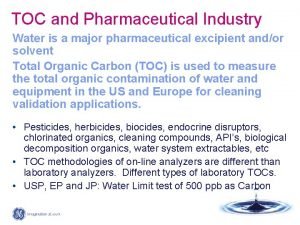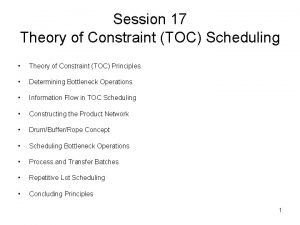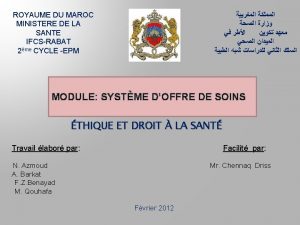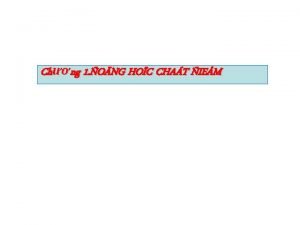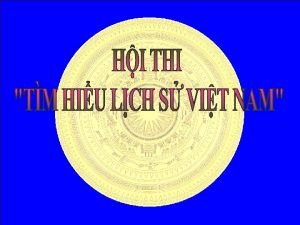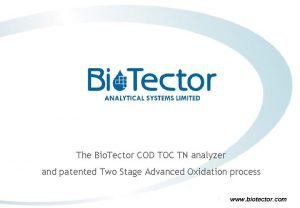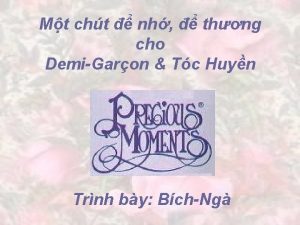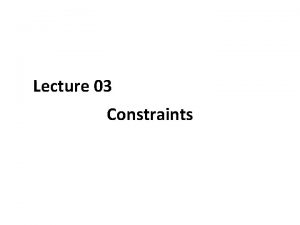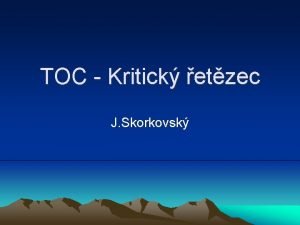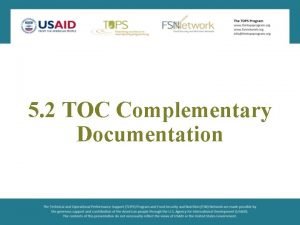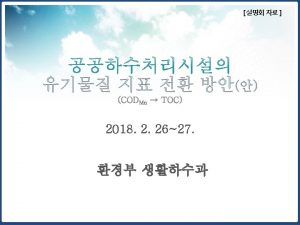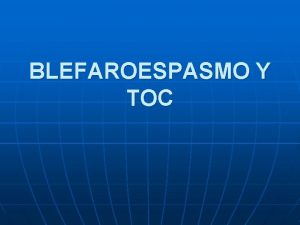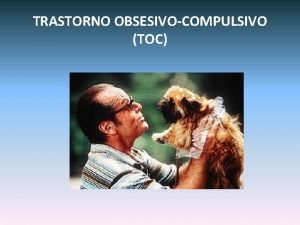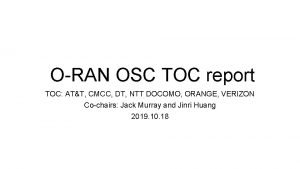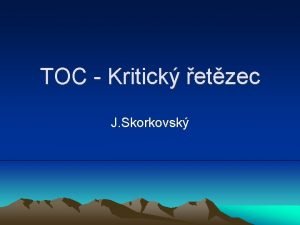TOC Theory Of Constraints 1 Theory of Constraints












- Slides: 12

TOC Theory Of Constraints 1

Theory of Constraints TOC How does TOC differ from the conventional shop control theory? • Throughput definition * Emphasis on utilization * Bottlenecks Steps of TOC Step 1: Identify the system’s constraints, whether physical or nonphysical Step 2: Decide how to exploit the system’s constraints. Get the most possible from the limit of the current constraint. Step 3: Subordinate everything else to the decisions made in step 2. Avoid keeping non-constraint resources busy doing unneeded work. Step 4: Elevate the system’s constraints. If possible, reduce the effects of the constraints. Offload some demand or expand capability. Step 5: If a constraint is relaxed in step 4, go back to step 1. 2

Principles of OPT TOC Optimized Production Technology (OPT) Is a production planning and control systems that focuses on identifying bottlenecks operations and synchronizing the efficient flow of material through the facility. Principles: 1. Do not balance capacity - balance flow. 2. The level of utilization of a non-bottleneck is determined by some other constraint in the system, not by its own potential. 3. Utilization of a resource means “ making what is needed’ whereas activation of a resource is “ making parts to keep the resource busy”. 4. Because bottleneck operations have no excess capacity, an hour lost on a bottleneck operation is an hour lost for the entire system. 5. Because non-bottleneck operations have extra capacity, an hour saved is a mirage. 6. Bottlenecks govern both inventory and throughput in a system. 7. The transfer batch size may not and in many cases should not, be the same as the process batch size. 8. The process batch may vary in size for various operations and over time. It should not be fixed. 9. All the system’s constraints must be considered simultaneously in determining 3 schedules. Lead times are a result of the schedule and are not fixed.

Bottlenecks TOC Non-Bottlenecks How do you find a Bottleneck? Which saves time when reduced? Can a Non-Bottleneck become a Bottleneck? A B 10 pc/hr C 5 pc/hr D 6 pc/hr 8 pc/hr Where is the bottleneck What is the throughput? What is the percent utilization of each workstation? What is the throughput if C has a 1 in 5 defect rate? 4

Capacity-Constrained Resources TOC Resource whose capacity is close to capacity and could be a bottleneck if it is not scheduled correctly. CCR Part A Cutting Sanding Paint Part B 60% 90% Part A Part B 70% Does the CCR become a bottleneck if “Cutting” station has an unexpected breakdown for 30 minutes? (Assume 100 units are produced in an 8 hr shift) 5

Drum - Buffer - Rope TOC Drum represents the Control Point Buffer represents inventory Rope ensures synchronization of each production step Why would the Bottleneck or Capacity Constraint Resource be the control point? Where is it most appropriate to have inventory? Why? How do we synchronize each production step? 6

Batch Size & Transfer Batch TOC When and where should Batch sizes be Maximized? When and where should Batch sizes be Minimized? Should Transfer batch sizes be smaller than Batch Sizes? 7

Functional Influences TOC Cost Accounting • Global measures: net profit, ROI & cash flow • Local measures: efficiencies and utilization rate Where does Goldratt differ? Marketing and Production • Why do these functions disagree on strategy? • Does performance measures play a role? 8

Performance Measurements TOC Financial Measurements • Net Profit • Return on Investment • Cash Flow Goal of the firm 9

Plant Measures TOC Operational Measurements • Throughput • Inventory • Operating expenses Productivity Goal of the firm 10

Unbalanced Capacity TOC Why does the text note that Unbalanced Capacity is better? Why is it better to balance flow than capacity? What is the impact of statistical variance on throughput? How do we define capacity? 11

IDOT Problem TOC 2 min Cashier 5 -7 min Licenses 2 -10 min Plates Info 3 -4 min Demand : 30/hour Demand : 20/hour 12



